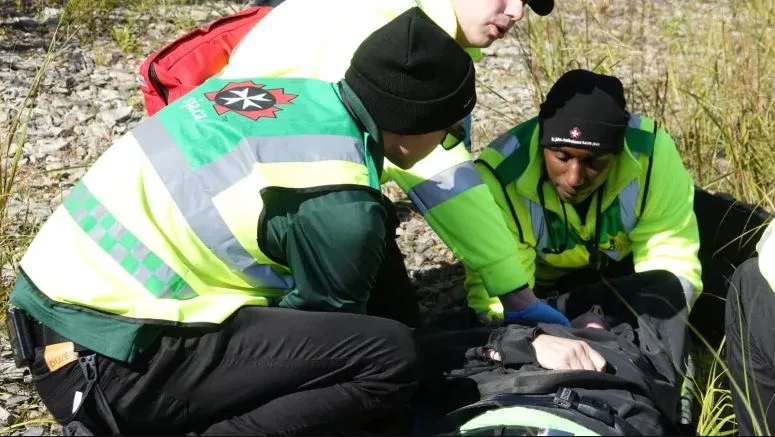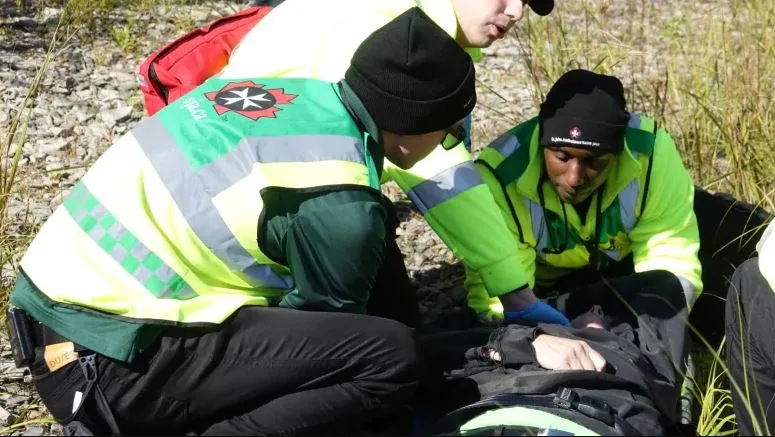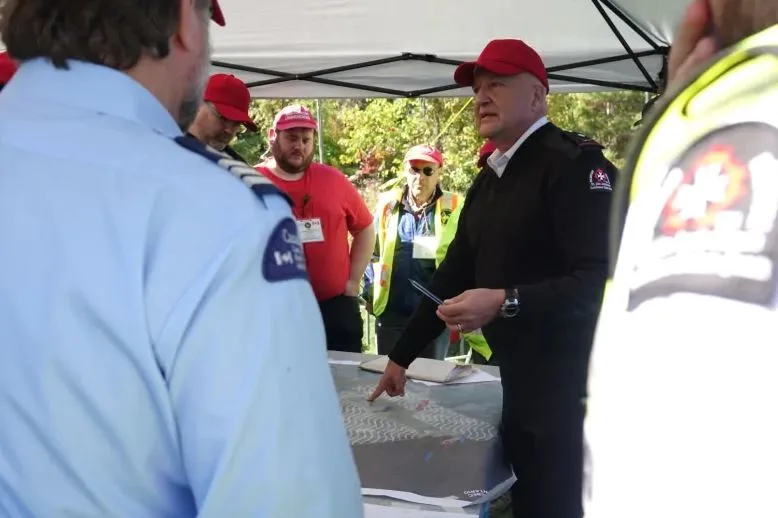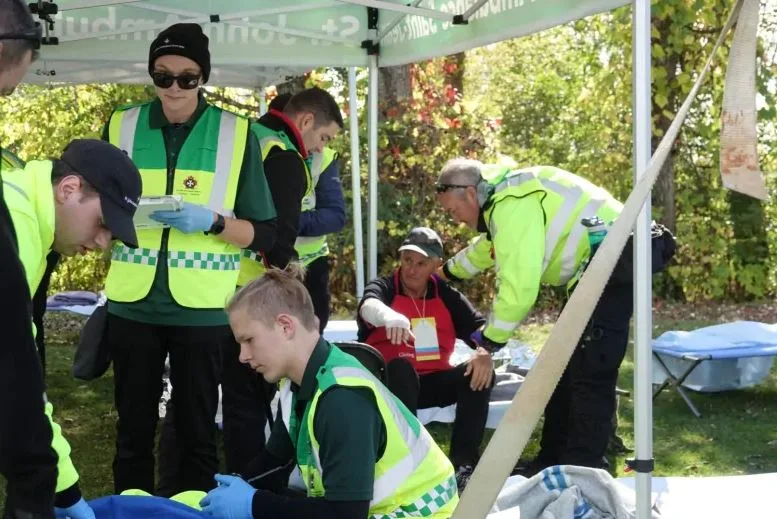
Earthquake simulation rattles Ottawa River shoreline
Ottawa volunteers took part in an emergency earthquake exercise Saturday in rural Dunrobin, preparing for the possibility a damaging and potentially deadly 6.5-magnitude quake could one day rattle the region.
Similar exercises have been organized by Gatineau officials for the past five years, but this was the first time Ottawa emergency crews were invited to participate — and the first time those exercises were held on this side of the Ottawa River.
Saturday's scenarios were aimed at giving first responders a taste of the challenges they'd experience in a real disaster.
They included locating wounded people along the shoreline using boats and low-flying planes, as well as carrying out medical evacuations along damaged roads.
More than 600 volunteers took part.

St. John Ambulance volunteers check for vital signs in a simulated rescue on a beach near Dunrobin on Oct. 5, 2019. (Amanda Pfeffer/CBC)
NEED TO 'GET READY'
"We don't know exactly about the probability or when the next earthquake could happen," said Michel Doré, the national emergency management co-ordinator for St. John Ambulance.
While the region hasn't had a 6.5-magnitude earthquake in our lifetimes, Doré said it has been hit by severe earthquakes over the past several hundred years.
"That's one of the reasons why we want not only to make people aware of that, but we want — as volunteers — to train and get ready for the disaster."

Michel Doré is the National Emergency Management Coordinator for St. John Ambulance, and pushed to have a coordinated earthquake preparedness exercise involving both volunteers from Gatineau and Ottawa. (Amanda Pfeffer/CBC)
Volunteers from a number of groups participated Saturday, including the Canadian Coast Guard Auxiliary, the Canadian Red Cross, Civil Air Search and Rescue, Ontario Search and Rescue and the Salvation Army.
Andrew Stanzel, an intensive care unit nurse in Ottawa, said many residents may not be aware of the potential danger.
"It was surprising for me when I found out about [the risk]," said Stanzel, who helped organize exercises involving St. John Ambulance volunteers retrieving people in medical distress from difficult-to-reach locations.

A search-and-rescue boat combs the Ottawa River shoreline for wounded during a simulated earthquake exercise on Oct. 5, 2019. (Amanda Pfeffer/CBC)
2010 QUAKE
The last significant earthquake to strike the region was in 2010, when a 5.0-magnitude earthquake with an epicentre near Val-des-Monts, Que., caused a few landslides and minor building damage.
In 2013 the Insurance Bureau of Canada released a report warning about the risk of a large earthquake, and that the region is ill-prepared to deal with that potential disaster.
One of the challenges, Doré said, would be working in two languages: French and English.
"Language is an extra layer of complexity. And disasters are already rich in providing complexity of potential challenges," he said.

St. John Ambulance volunteers help injured patients during a simulated earthquake exercise in Dunrobin on Oct. 5, 2019. (Amanda Pfeffer/CBC)
Members of Radio Amateurs of Canada also took part Saturday, including Fred Crowe and Richard Aronoff.
The pair worked as communication observers, making sure a volunteer's body was eventually found on the shores of the Ottawa River.
"When there is an emergency, there's volunteers going every which way. And if they can be co-ordinated using radio, it makes it a lot easier," said Crowe.
The two licensed ham radio operators have known each other's voices for years, but Saturday was the first time they got to meet in person.
"So now we're friends off the air as well," said Aronoff.
This story ws originally written by Amanda Pfeffer for CBC.ca.










